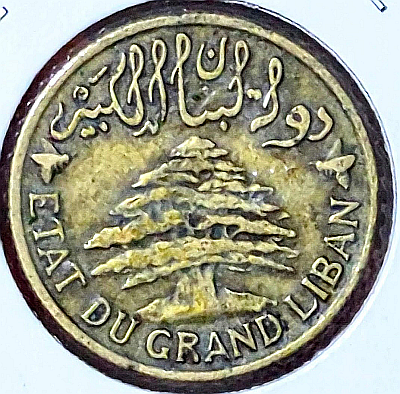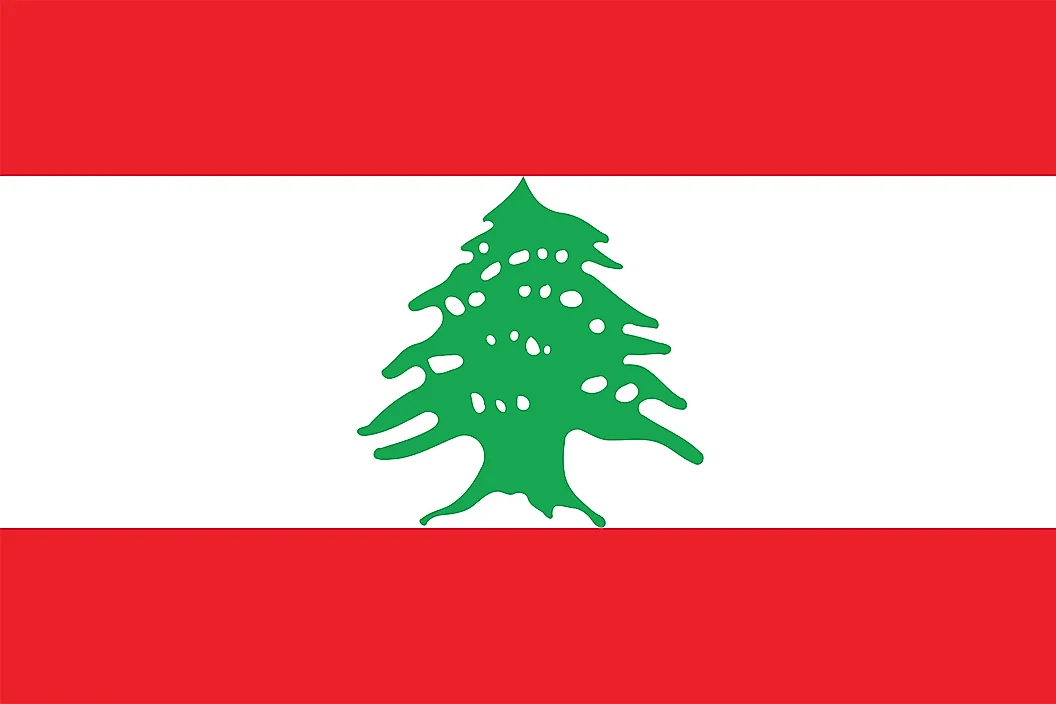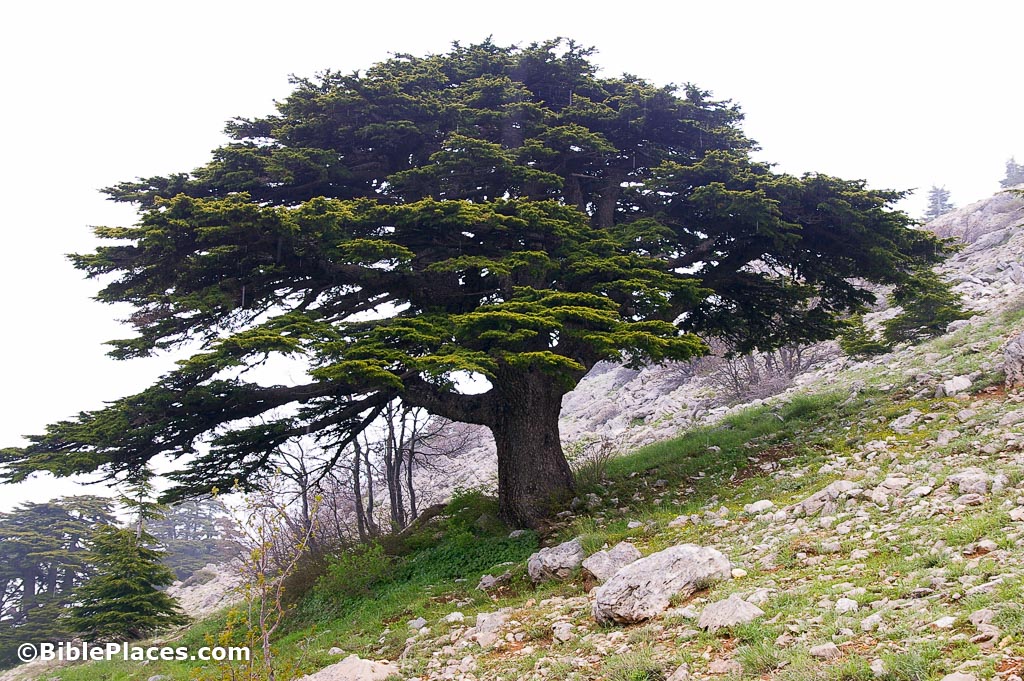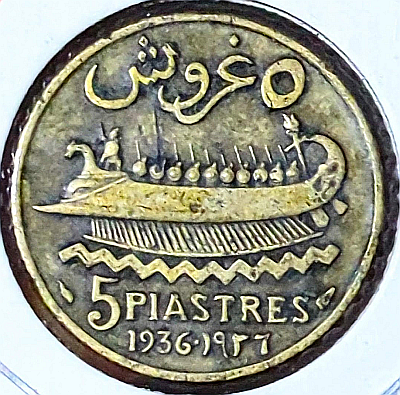A coin with two ancient symbols

History
Lebanon has been inhabited since at least 5,000 BC. First by the Phoenicians, then Romans, Byzantines, Caliphates, Crusaders, Ayyubids, Mamluks and Ottomans. Following the dissolution of the Ottoman Empire, after WWI Lebanon came under the French “Mandate for Syria and Lebanon“. This lasted until the end of WWII when Lebanon declared independence. Since then, the country has been subject to occupation by Syria from 1976 to 2005 and by Israel from 1985 to 2000.
Denomination
Coming back to the French Mandate period, which brings us to our coin. This 5 Piastres / 5 Giush coin was issued in 1936. The coin is Bronze, weighs 3.85g and is 23mm diameter. Roughly the same as the equivalent 5 Qirsh / Piastres of Syria at the time. The coins of both countries were very similar in size and weight, although the designs of each differed.

(Above is the 1935 Syria 5 Piastres. Same size and shape, but quite different design to the Lebanese coin of the same time period and value).
In conversation with Thanasis Kinias on Mastodon about the piece, he noted “This coin uses a different Arabic spelling of ‘piastre’ than I’m accustomed to.
The inscription is ‘5 ghurūsh’ using a ghayn (غ) for the first letter, whereas in other contexts I’ve always seen it as ‘qurūsh’ using qaf (ق) as the first letter.
This prompted me to dig a bit in Wiktionary, and it seems that both ghayn and qaf spellings were used in Ottoman Turkish—which hadn’t occurred to me, as it’s in Modern Turkish (which would correspond to the qaf spelling). But Turkish Wikipedia says it’s “Kuruş önceden guruş” (kuruş, formerly guruş) where would represent the ghayn spelling. Now I’m curious whether this coin is just being old-fashioned or if it reflects a conservative local pronunciation.”
Good question! As the coin was first minted in 1925, less than 10 years after the end of the Ottoman empire, it could be either. If anyone knows more, please comment below! Looking at the Syrian coins of the period (as they were both under the French Mandate at the time), the Syrians appear to have used “Qirsh”. Possibly local usage of the term, possibly a different cultural advisor to the French mint? The Ottoman Empire coins (1844-1923) are listed in Numista as 40 Para = 1 Kuruş • 100 Kuruş = 1 Lira. The term “Kuruş” is still used to this day in Turkey (also a former part of the Ottoman Empire)
Obverse
The Lebanese 5 Piastres features the country name “The State of Greater Lebanon” in both Arabic and French. Central to the obverse is the national emblem of Lebanon, the Lebanese cedar.

(Flag of Lebanon, as from WorldAtlas.com).
The Lebanon Cedar (Cedrus libani), is a species of tall coniferous trees characterized by large, irregularly shaped heads with spreading branches. It typically grows in the mountainous regions of the Eastern Mediterranean. In Middle Eastern culture, it has great historical and religious significance.

(Cedar of Lebanon, photo from BiblePlaces.com)
The tree is mentioned in the Palermo Stone (the earliest royal inscription from ancient Egypt) as well as a number of places in the Old Testament of the Bible.
Reverse

One of the primary uses of the Cedar Tree of Lebanon was in boat building. The reverse of the coin features an ancient Trireme, as built with Lebanese Cedar. This side also features the value, denomination and year in both languages.
The Trireme has featured on coins of several nations, particularly Greece. If, however, you find a coin with a cedar on it, chances are it is from Lebanon. Of the 46 circulating coins issued by the country, only 13 coins do NOT feature an image of the Cedar of Lebanon. In contrast, the only circulating coin listed on Numista which features a cedar which is not Lebanon, is a 25 Mils from Cyprus.


Leave a Reply